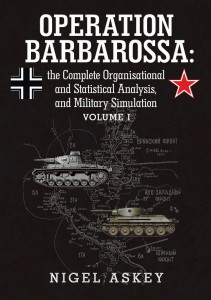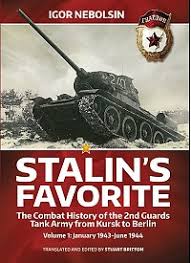As I would like to understand the conflict on the Eastern Front, and in particular Army Group South during the months of June to August 1941, it is necessary to understand the orders that Army Group South was operating under. Directive 21 was the order that initiated planning for Operation Barbarossa. This directive was signed 18 December 1940, and its signature accelerated the process by which preparations were made to invade Soviet Russia. To better understand the initial instructions, and thereby assess the success or failure of Army Group South I have attempted to transpose this directive into an orders format to aid in my understanding of the various groups, tasks, and objectives at this point in the planning process. Comments or feedback would be appreciated.
For those who wish to read the original text of Directive 21 is available online at http://www.alternatewars.com/WW2/WW2_Documents/Fuhrer_Directives/FD_21a.htm or a copy can be received through the archives in the United States Department of State, “Documents on German Foreign Policy: From the Archives of the German Foreign Ministry.” Series D (1939-1945), The War Years, Volume 11: February 1 – June 22, 1941. Document 532, pp 899-902.
-AR-
18 Dec 1940
Directive No. 21: OPERATION BARBAROSSA
SITUATION
1.
MISSION
2. The German Wehrmacht must be prepared to crush Soviet Russia in a quick campaign before the conclusion of the war against England in order to …
EXECUTION
3. Concept of Ops. My intent is to have the Army, supported by the Air Force, employ all available units to destroy the Russian army in Western Russia. This will be accomplished through daring operations led by deeply penetrating armoured spearheads. This penetration will encircle Russian forces preventing them from withdrawing into the depths of Russia. The main effort is the destruction of the Russian Army. The end state being the advancement of German borders to the Volga-Archangel line at where the Asiatic Russians Air Force will be unable to interfere with German production.
4. Army.
a. Overview (in accordance with plans submitted to me). The theatre of operations will be divided into a Southern and a Northern sector by the Pripet Marshes, the main weight of attack will be delivered in the Northern sector where two Army Groups will be employed.
b. Northern Sector.
i. Phase 1 – Stage 1. Army Group Centre will have the task of advancing with powerful armoured and motorised formations from the area around and north of Warsaw, routing the enemy forces in White Russia.
ii. Phase 1 – Stage 2. Commenced upon destruction of the enemy forces in White Russia, strong mobile forces will advance northwards and, in conjunction with Army Group North operating out of East Prussia in the general direction of Leningrad, to destroy the enemy forces operating in the Baltic area.
iii. Phase 2. Only after destruction of enemy forces in White Russia and the Baltic area, including of the occupation of Leningrad and Kronstadt, will the attack be continued with the intention of occupying Moscow. While Moscow is an important centre of communications and of the armaments industry, only a surprisingly rapid collapse of Russian resistance could justify the simultaneous pursuit of both objectives (Leningrad and Moscow).
c. Southern Sector.
i. Phase 1. The Army Group operating south of the Pripet Marshes will also seek, in a concentric operation with strong forces on either flank, to destroy all Russian forces west of the Dnieper in the Ukraine. The main attack will be carried out from the Lublin area in the general direction of Kiev, while forces in Rumania will carry out a wide enclosing movement across the lower Pruth. The task of the Rumanian Army to hold down Russian forces in the intervening area.
ii. Phase 2. With the enemy forces west of the Dnieper destroyed, the pursuit of the enemy will seek an early capture of the Donets Basin which is important for the war industry.
d. Scandinavia.
i. Protection of Norway. The most important task of Group XXI, even during these eastern operations, remains the protection of Norway.
ii. Murmansk. Any forces available after carrying out this task will be employed in the North (Mountain Corps), at first to protect the Petsamo area and its iron ore mines and the Arctic highway, then to advance with Finnish forces against the Murmansk railway and thus prevent the passage of supplies to Murmansk by land. The question whether an operation of this kind can be carried out with stronger German forces (two or three divisions) from the Rovaniemi area and south of it will depend on the willingness of Sweden to make its railways available for troop transport.
iii. Finland. The Finnish Army, in conjunction with the advance of the German North flank, will hold down the strongest possible Russian forces by an attack to the West, or on both sides of Lake Ladoga, and to occupy Hangö.
5. Air Force.
a. The Air Force will have to make available for this Eastern campaign supporting forces of such strength that the Army will be able to bring land operations to a speedy conclusion and that Eastern Germany will be as little damaged as possible by enemy air attack. This build-up of a focal point in the East will be limited only by the need to protect from air attack the whole combat and arsenal area which we control, and to ensure that attacks on England, and especially upon her imports, are not allowed to lapse.
b. It will be the duty of the Air Force to paralyse and eliminate the effectiveness of the Russian Air Force as far as possible. It will also support the main operations of the Army, those of the central Army Group and of the vital flank of the Southern Army Group. Russian railways will either be destroyed or, in accordance with operational requirements, captured at their most important points (river crossings) by the bold employment of parachute and airborne troops.
c. In order that we may concentrate all our strength against the enemy Air Force and for the immediate support of land operations, the Russian armaments industry will not be attacked during the main operations. Such attacks will be made only after the conclusion of mobile warfare, and they will be concentrated first on the Urals area.
6. Navy.
a. The main efforts of the Navy will continue to be directed against England even during the Eastern campaign.
b. The Navy will protect our own coasts and to prevent the break-out of Soviet Russian naval units from the Baltic. As the Russian Baltic fleet will, with the capture of Leningrad, lose its last base and will then be in a hopeless position, major naval action will be avoided until this occurs.
c. After the elimination of the Russian fleet the duty of the Navy will be to protect the entire maritime traffic in the Baltic and the transport of supplies by sea to the Northern flank.
7. Coordinating Instructions.
a. Probable Allied Participation. Participation by Romania and Finland is to be expected. Their tasks are:
i. Romania is to pin down Russian forces where Germans are not committed and otherwise act as auxiliary service in the rear;
ii. Elimination of Hango by Finland; and
iii. Use Swedish railroads and highways for the concentration of German North Group.
b. Timings.
i. Preparations are to be completed by May 15, 1941.
ii. In certain circumstances orders for the deployment against Soviet Russia will be issued eight weeks before the operation is timed to begin.
SERVICE SUPPORT
COMMAND AND SIGNALS
8. The Command Relationship with Finish and Romanian Forces is undefined.
9. Orders are need to know and transmission of the directive kept secretive so as to avoid discovery of these preparations against Russia.
10. Commanders-in-Chief are directed to submit their plans of on the basis of this directive.


